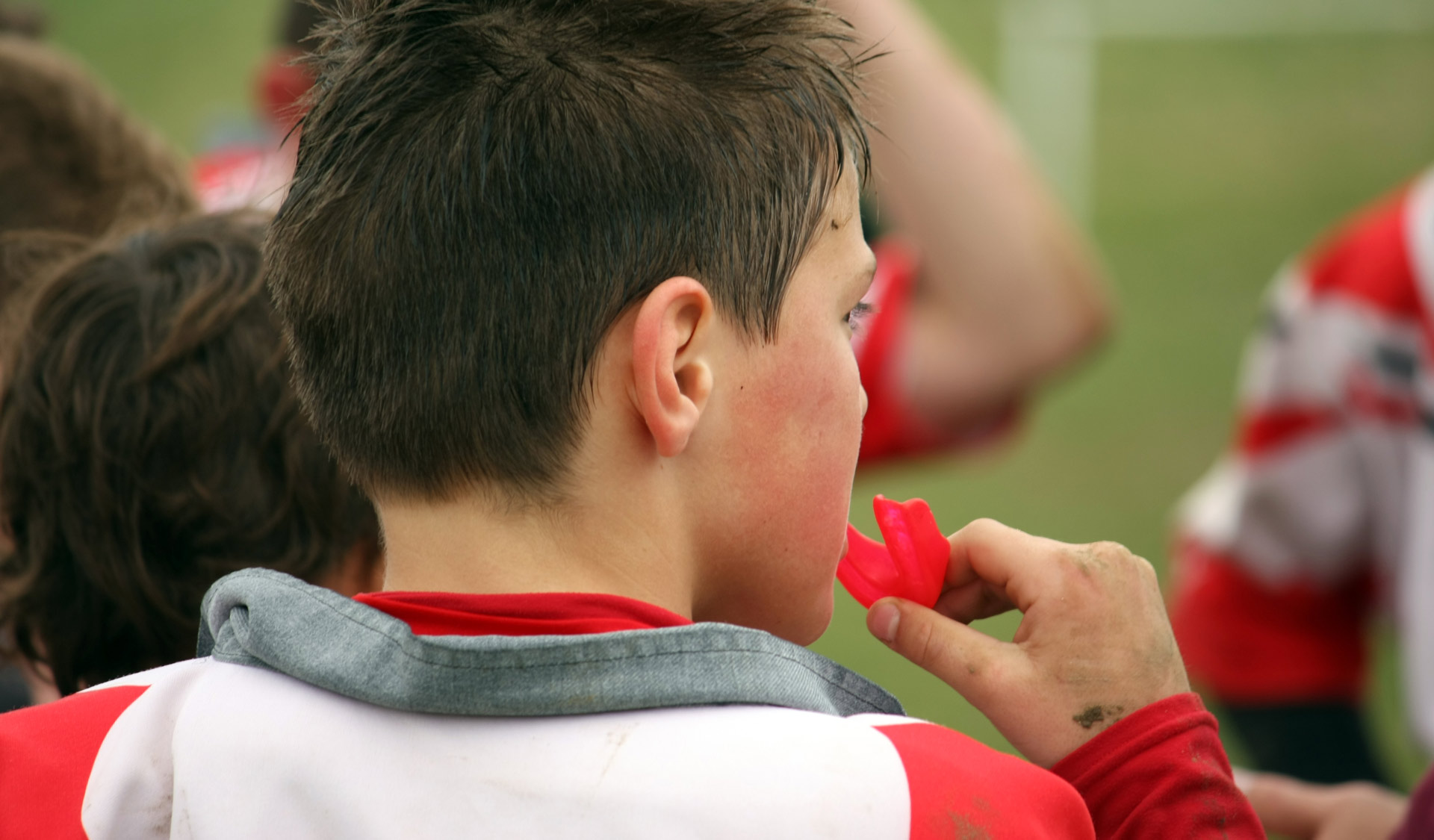The value of sport for children of all ages is well documented and the benefits sport brings in terms of mental and physical wellbeing are tremendous. But some sports bring with them a certain risk of injury, and just like wearing shinpads for football or headgear for skateboarding, it’s important to protect children’s teeth when playing sport.
Our Paediatric Specialist, Maalini Patel, took some time out to outline why children should wear correctly fitting mouthguards to offer the best form of protection.
What is a mouthguard?
Maalini: A mouthguard (or sports guard) is a type of appliance designed to prevent or minimise injury to teeth and oral structures during sports.
Mouthguards are worn over the upper teeth and are effective as they absorb and redistribute energy which in the event of a collision (with a person, a ball or a piece of equipment for example), may be transmitted to the area.
Wearing a mouthguard will ensure the teeth and gums are cushioned and protected and it can prevent serious damage to teeth and oral tissues from sport-related trauma.
Who should wear a mouthguard?
Maalini: Children of all ages should always wear a mouthguard when participating in contact sports in which an injury to the mouth may occur. This includes football, hockey, rugby, cricket, lacrosse and boxing, but extends to any sport where there is a risk of contact.
Some children are more prone to dental trauma, including those with special needs and those with an increased overjet or an anterior open bite. For these children, it is crucial that a mouthguard is used in order to prevent damage to the teeth.
What are the different types of mouthguard?
Maalini: There are three broad types of mouthguard available:
- Stock mouthguard – these are a standard size and do not allow any modifications. They are usually poorly fitting and offer only minimal protection.
- Boil and bite mouthguard – heated and then moulded to the child’s teeth at home, these mouthguards are prone to deformation and may require constant biting force to keep in place.
- Custom made mouthguard – these are tailormade using an impression taken of the child’s teeth. Although the more expensive option, they are the most effective due to a better fit and better retention in the mouth.
Why is a custom-made mouthguard the best option?
Maalini: A mouthguard made from a mould of the child’s teeth, taken by a dentist, will always be the best option because it will fit securely and evenly across the teeth. The better fitting a mouthguard, the better retention and protection it offers, should trauma occur.
How should I take care of my mouthguard?
Maalini: To prolong the mouthguard’s longevity, ensure it is kept clean with soap and cold water. The mouthguard should be rinsed before and after use. Keep mouthguards away from the sun and hot water, as these elements may cause it to distort.
How often should a mouthguard be changed?
Maalini: When children are in the mixed dentition (approximately age 6-11), the baby teeth exfoliate, and the adult teeth erupt. As these changes occur, the fit of a mouthguard is compromised. A poorly fitting mouthguard offers only limited protection so should be checked at regular intervals, so bring it with you to your routine check-ups with your dentist.
For more information, or to book an appointment for a mouthguard fitting please contact the practice by calling 01737 240123

